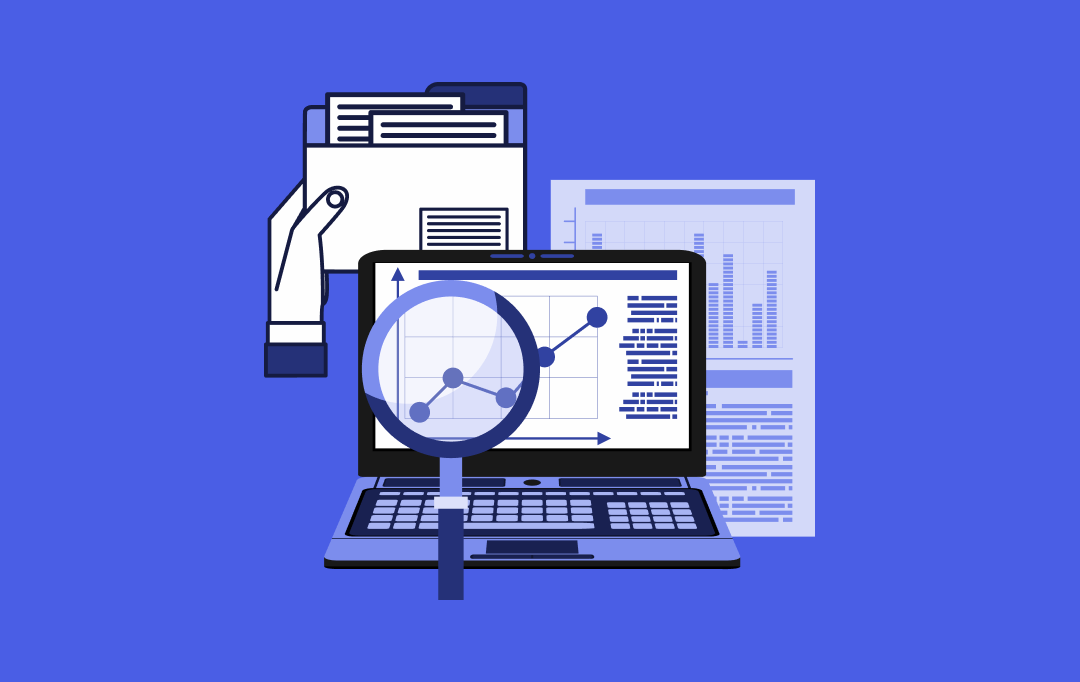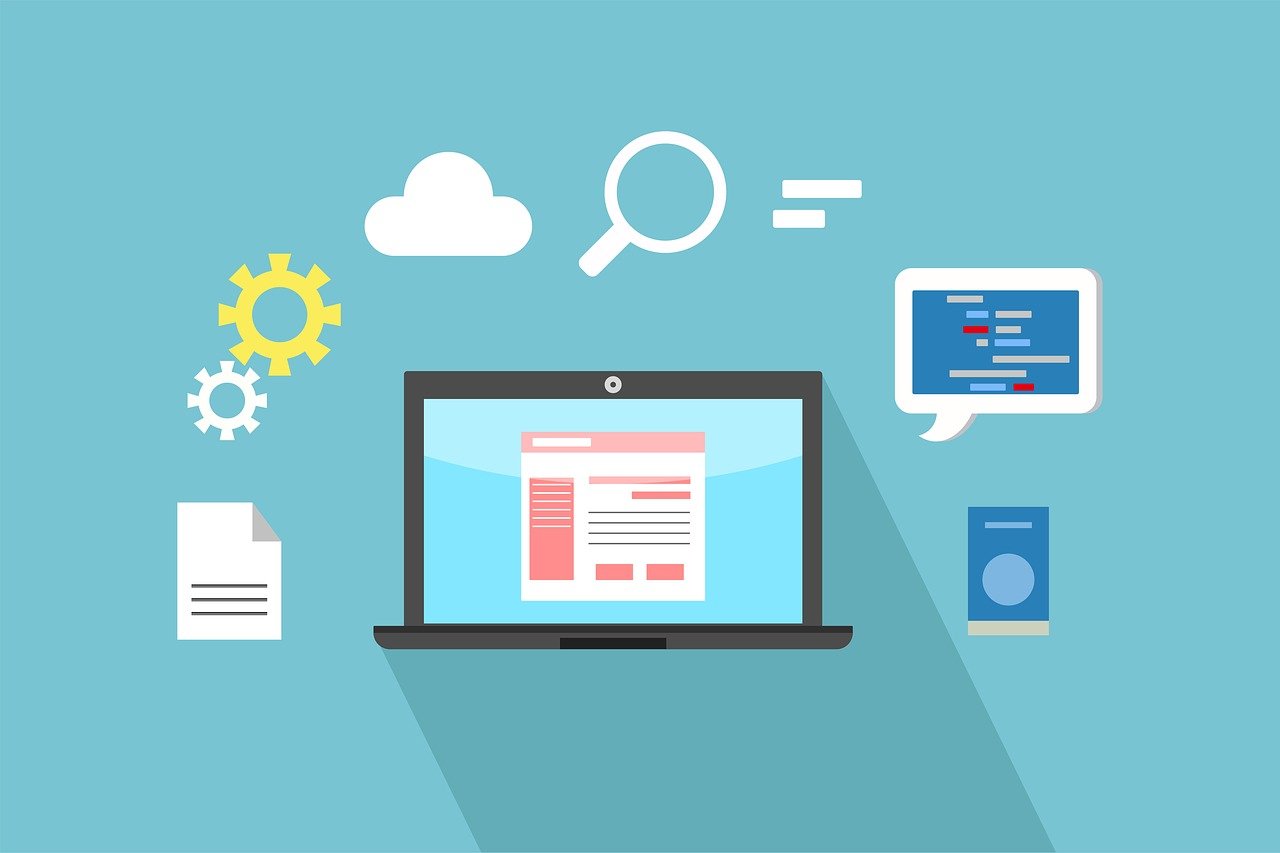Data Analytics and Its Impacts on Small Businesses

SMBs was just beginning. As a pioneer in the SaaS industry, Salesforce provided businesses with a platform that constantly monitored and recorded employee actions and tracked KPIs. The vast amount of data it captured and its robust reporting capabilities allowed business owners to analyze performance metrics for individuals, teams and companies.
Today, nearly all business applications, including CRMs, accounting software and human resource information systems (HRIS), record real-time actions and changes. These platforms generate massive volumes of data that seamlessly integrate with analytics tools. This integration provides SMBs with detailed insights to inform cost reductions, improve profitability and identify inefficiencies. We’ll look at current trends affecting SMB data analytics and share how businesses use data analytics today.
Five data analytics trends impacting small businesses in 2024
To remain competitive, businesses must use data to better understand their customers and find ways to work more efficiently. Here are five key analytic trends impacting small businesses:
1. Artificial intelligence technology is improving business analysis.
A decade of investment in artificial intelligence (AI) and machine learning (ML) has boosted business growth on multiple fronts, such as the ability to turn text into images and tools that predict when deals will close and at what value. SMBs now have access to sophisticated operational, forecasting and planning tools previously exclusive to large enterprises with coding teams.
Kunal Madan, founder of online retailer Amarra, believes data analytics can significantly bolster SMB efficiency. “Analyzing customer behavior data can highlight peak purchasing times, allowing businesses to optimize their operational schedules, thus reducing costs,” Madan explained. “Detailed product performance data can inform targeted inventory management, preventing stockpiling and wastage.”
Here are a few examples of AI helping small businesses with data analysis:
- AI-powered employee performance analysis: Managers and supervisors can use AI analytics tools to assess employee performance, pinpointing why KPIs are missed and highlighting areas where specific training is needed.
- AI-powered decision-making: At the highest levels, CEOs are using decision support systems to tell them the likely result of a course of action they’re considering, such as investments in machinery, which new markets to enter, and potential returns on product development.
- AI-powered retail management: AI data analytics for retailers can reduce the risk of ordering too many items or the wrong stock. It can even predict how much stock each shop and the online warehouse will need so customers aren’t disappointed when shopping.
The marketplace for AI plug-ins is growing quickly. AI-powered data analytics tools are available either as core or add-on services for numerous business apps. We expect SMBs to continue adopting this technology, as its insights will help business owners find rationalization and efficiency gains in a sluggish economy.
2. Artificial intelligence tools are improving customer relationships.
Sophisticated AI and ML tools rely on big data to parse and analyze information to better understand customer behaviors, preferences and trends.
Mary Zhang, head of marketing and finance at digital infrastructure provider Dgtl Infra, says data-driven decision-making is crucial to improving customer relationships because it reduces bias and guesswork. “When we shifted from gut-feel to data-backed strategies in our marketing, we saw a 40 percent increase in campaign effectiveness,” Zhang shared. “The key is combining data insights with industry expertise for truly impactful decisions.”
Consider the following AI-powered technologies that businesses use to deepen customer connections:
Deeper customer insights with natural language processing (NLP)
NLP technologies allow businesses to extract valuable insights from customer interactions and social media mentions so you can better understand the meaning and emotion hidden in transcribed phone calls, emails, live chats and social media messages. When combined with sentiment analysis, NLP can:
- Recognize positive, negative and neutral customer sentiments.
- Detect emotions like frustration, satisfaction or excitement in your customers’ words.
- Distinguish between statements, questions, suggestions and compliments.
One practical example of NLP in action is Amazon’s Comprehend tool, which automatically summarizes consumer feedback on products and customer support interactions. This allows businesses to better understand customer sentiment and effectively address areas of concern.
Improved customer service with conversational AI
Conversational AI tools, powered by live data, help businesses understand and respond to real-time customer needs. This technology gives businesses a constantly updated stream of data on what customers want to know, what excites them and what concerns them. AI tools can also provide more effective and faster customer service at a fraction of the cost of traditional labor.
Here are two examples of conversational AI in action:
- Live chat software: AI-driven chatbots can answer customer questions, suggest products, and solve issues instantly across your website, messaging apps and social media channels.
- Call center solutions: The best call center software platforms use AI to manage calls, resolve technical issues, process orders and provide support without human assistance.
If a conversational AI tool encounters a question it can’t answer, it transfers the customer to a human agent for follow-up and prompts the agent with on-screen suggestions to help find a solution.
Enhancing data analytics with large language models (LLMs)
Large language model (LLM) tools like ChatGPT offer real-time, intelligent responses through a chatbot interface. This technology is fundamentally different from the rules-based conversation tools that preceded it.
Rules-based tools had the following drawbacks:
- They responded using keywords without any actual knowledge of what the customer was requesting — it was more of a best guess.
- They had no memory of a conversation. Every time the tool interacted with a customer, it was like it was the first time.
- While they stored conversational and interaction data, these tools were limited in understanding this data outside a keyword frame of reference.
LLMs effectively address all of these points:
- They understand the context and intent behind customers’ words and actions, making their responses more relevant to their needs.
- They can recall context across multiple applications and draw on a client’s previous history, making the interaction far more personal.
- Their conversational and interactional analysis is far deeper, meaning they’re able to grasp nuances, understand complex inquiries and generate insightful responses that customers find genuinely helpful.
LLMs also operate on a broader scale. They can perform deep contextual analysis on large datasets, not just individual customers. This means SMBs can more easily identify marketing trends, personalize their marketing and run their business based on data-driven insights instead of gut instinct to stay competitive.
3. The DaaS and DSaaS markets are growing.
Data as a Service (DaaS) and Data Security as a Service (DSaaS) are rapidly growing IT trends that help businesses efficiently store, analyze and protect their data.
- DaaS: As data and data processing have shifted to the cloud, DaaS companies have gained popularity. These platforms offer businesses a broad range of powerful prebuilt tools for analyzing data, allowing companies to gain insights without building complex infrastructure. Additionally, DaaS platforms provide opportunities for data monetization, enabling companies to share or sell their data to fill gaps in other businesses’ databases.
- DSaaS: Protecting your business from cybercrime is an urgent priority, partly because companies are under increasing regulatory pressure to keep data safe and use it responsibly. DSaaS solutions address the complexities of protecting your business’s sensitive information, especially when it’s in transit or accessed through remote, unsecured devices. These services help businesses strengthen data privacy and reduce the risk of cyberthreats by implementing robust security measures tailored to modern, cloud-based environments.
4. Data visualization tools are growing more sophisticated.
Gathering data is necessary for business success and growth. However, how well you process and analyze that data is critical, affecting the quality of the decisions you make about your company’s direction.
Data visualization tools transform complex data into visual formats like charts, graphs and dashboards, making it easier to understand and analyze. Many popular software packages, including the best CRM software and the best accounting software solutions, have powerful built-in visualization tools. However, specialized visualization packages are making data analysis even more effective, particularly when it involves large data volumes.
For example, Tableau is a popular data visualization tool that takes information from spreadsheets and databases and turns it into interactive charts and dashboards. These visuals can be shared across the organization to keep everyone informed and aligned.
5. Data monetization strategies are growing in popularity.
Data monetization strategies help businesses make money or gain value from existing data.
This can involve your business selling data to other companies, using it to create better products, or finding new commercial opportunities.
Data monetization has internal and external approaches:
- Internal: Internal monetization involves using company data to improve decision-making, boost sales, enhance customer satisfaction and reduce costs.
- External: External monetization involves sharing or selling data to third parties or pooling it with other companies in joint marketing campaigns.
Ben Sporn, CEO of financial publisher Joywallet, emphasizes the importance of internal data monetization strategies for businesses. “Small businesses can use data to analyze customer behavior and identify patterns that inform targeted marketing strategies,” Sporn explained. “Instead of spreading their marketing budget thin, they can focus on the most effective channels and customer segments, which can lead to better ROI.”
Data is an asset, and it makes commercial sense to monetize it. However, with the right strategy, you can unlock new revenue opportunities, build valuable partnerships and better understand your customers.
How can SMBs use data analytics?
Consider the following four impactful ways SMBs are using data analytics:
- Data analytics helps SMBs improve closing rates. One of the main applications of machine learning for small businesses is tracking customers throughout the different stages of the sales cycle. Small businesses can leverage data analytics to identify specific customer segments who are ready to buy (and, more importantly, when they’ll be ready).
- Data analytics helps SMBs provide better customer service. AI-powered data analytics tools help provide an enhanced understanding of customers’ needs and pain points, allowing SMBs to deliver personalized service. For example, as our RingCentral Omnichannel CX review explains, this platform’s built-in sentiment analysis can record all phone calls, emails and live chat conversations over the past 90 days, analyze them, and present its results as a word bubble. Businesses can see what issues impact customers and ensure agents respond appropriately.
- Data analytics helps SMBs identify and respond to trends. Businesses can leverage data analytics to identify overarching patterns and trends. For example, if numerous customers contact a business asking the same questions, creating an online knowledge base that addresses these questions in depth might make sense. This resource could even increase sales as it addresses common questions potential buyers face and helps strengthen a brand’s unique selling proposition (USP).
- Data analytics helps SMBs better understand customer behavior. Data analytics provides detailed analyses of customer behavior, showing business owners what motivates consumers to buy their products or services. Sporn noted that analyzing customer behavior and identifying patterns allows SMBs to create targeted marketing strategies. “For example, by using data from previous sales and website behavior, a small business can tailor its marketing campaigns to specific times of the year or customer needs, cutting waste and increasing efficiency,” Sporn explained.
Data analytics can be budget-friendly
Leveraging data analytics is cost-effective for SMBs. Consider the following affordable resources that can provide small business owners with a wealth of information:
- Website reporting tools: Google Analytics and Clicky offer website reporting with free and premium versions. These tools are ideal for tracking web traffic, helping you discern which marketing strategies are most effective, how visitors explore your site, potential friction points and more.
- Wolfram Alpha: Wolfram Alpha is a computational intelligence platform with free and paid versions. It allows you to compute expert-level answers using its signature algorithms, knowledge base and AI technology.
- Microsoft Power BI: Microsoft Power BI is a robust platform for generating visualized business data on everything from gross profit and revenue to store and warehouse demand and turnover. The Pro option costs $10 per user per month, making it affordable for most small businesses.
- AI-powered tools: AI-powered tools like ChatGPT and Claude can help businesses simplify complex data to identify patterns, trends and solutions. AI tools can also support businesses with limited resources by automating tasks, such as data entry, freeing up more time for staff to focus on other essential tasks.
Zhang stressed that SMBs getting started with data analytics have numerous options. “We began with simple spreadsheet analysis and gradually moved to more sophisticated platforms like Google Analytics and Tableau,” Zhang shared. “These tools offer powerful insights without breaking the bank.”
How to get started with data analytics in your business
Integrating data analytics into business processes can be complicated. But it’s worth it, according to Stuart Barber Yarborough, consulting business lead at global consulting firm Royal HaskoningDHV.
Before starting a data analytics project, be sure you have the following:
- Team members who understand data analysis
- Easy-to-use software that can analyze your data efficiently
- A constant data feed from other business apps into your data analysis software
Consider the following best practices for starting a data analytics project:
- Hold a planning meeting to set goals. Barber Yarborough stressed that any data analysis journey must support the business’s overall strategy and goals and shouldn’t be treated as a separate task. “The key first step is a planning meeting, where you look at where your business is now, where you want it to be, and the pain points or gaps that will confront you before you get there,” Barber Yarborough advised.
- Get your team on board. After setting your goals, it’s time to get your staff engaged with the project. You must communicate the benefits their work will bring to the business. “Work with your team to identify high-priority tasks that will get buy-in and enthusiasm from your staff,” Barber Yarborough recommended. “If they don’t see the vision and the end goal, they’ll view this data project and others as nothing more than extra work for them.”
- Identify the data you want to analyze. A data analysis project must use key metrics, like KPIs and customer satisfaction data, that provide insights into performance. “By having a clear picture of the ways you’re improving and defining a basic project goal, you can identify the data that’s most important for your project’s success,” Barber Yarborough explained.
- Collect and analyze relevant data. Initially, you should focus on collecting and analyzing only the most relevant data. This will prevent your team from getting bogged down with unnecessary information and adding greater complexity to the project. As you go on, you can collect and analyze more detailed data, but always be selective about the data you include.
- Choose the right data analysis tools. Barber Yarborough advises starting a data analysis journey with straightforward, widely used software like Excel. “This lets people begin without needing specialized software,” Barber Yarborough explained. “Later on, you can use more complex apps and software to help uncover important insights more easily.” Tools providing clear visual reports are ideal. “Whatever apps and software you choose, try to make sure they are easy for project team members to use so they spend their time productively, rather than struggling to use them,” Barber Yarborough added.
Data analytics will keep transforming business
Data analytics can bring transformative insights to businesses. Bruce Zheng, founder and CEO of strategic valve manufacturer NTVAL, shared how data analysis helped transform the company from a small local firm to an international provider.
The business analyzed its production cycle and discovered it overstocked 30 metric tons of raw materials annually. It adjusted its order cycles and saved more than $150,000 in inventory holding costs. “We used Excel to track daily production rates and find inefficiencies,” Zheng explained. “Tracking these metrics could reduce downtime by 60 hours per month and save about $20,000 in labor and missed deadlines.” The company now uses AI-driven tools to forecast valve demand. It also identified $300,000 in savings by optimizing its supply chain and restructured its capacity to produce an extra 10,000 units a week, generating additional revenues of $500,000 a year.
With results like these, it’s no surprise that 93 percent of businesses plan to increase investments in data and analytics, according to an EY study. The trends mentioned here indicate a swift evolution of data analytics and demonstrate their power to transform multiple aspects of operations.
Whether it’s mimicking the human brain’s knowledge acquisition through machine learning and deep learning or capitalizing on unused dark data to gain a competitive edge, the new era of data analytics has intensely practical applications that businesses should not overlook.
link





